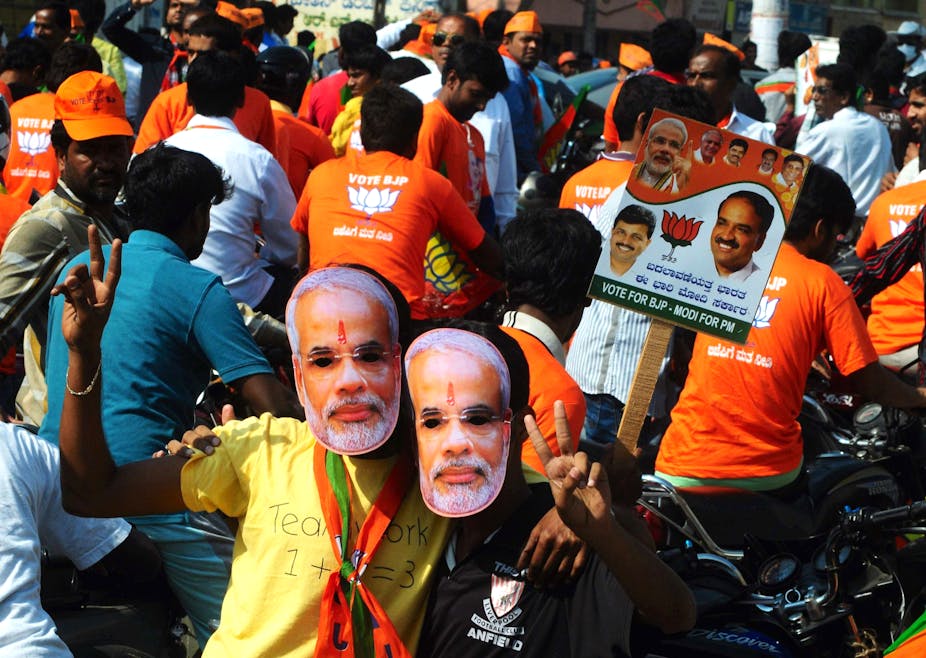The first set of Indian constituencies goes to the polls on April 7 in what has been described as “the biggest election ever seen”. The scale of organisation needed to co-ordinate this democratic exercise is staggering: more than 800m voters, almost 2m electronic voting machines, 543 constituencies and a voting schedule spread over almost six weeks. In a country as vast as India, ensuring that this process results in elections that are generally perceived to be fair is essential to secure the legitimacy of the government that is elected, whatever its ideological hue.
A widely quoted recent remark by India’s veteran leader (and currently minister for agriculture in the Union Cabinet), Sharad Pawar, has brought the issue of potential electoral malpractice into sharp focus. In an election rally, he is reported to have encouraged his supporters to vote twice, taking advantage of the fact that elections in the state of Maharashtra are split across three dates (April 10, 17 and 24).
“Vote early, vote often” is a remark generally attributed to the activities of organised crime in Chicago in the early 20th century at a time when the electoral process in the city was regularly subverted. Ironically, as recently as 2008, election officials in Chicago had to clarify that voting early did not entitle people to a second shot.
This highlights the relative ease with which modern democratic practices, such as postal ballots and early voting, can result in electoral outcomes that remain under suspicion well after the results have been declared. The most famous recent example was the Florida battle which proved decisive in the [election of George W Bush](http://www.theguardian.com/world/2001/jan/29/uselections2000.usa](http://www.theguardian.com/world/2001/jan/29/uselections2000.usa) over his Democratic rival Al Gore in the 2000 presidential election.
In the UK, the possibility of multiple registration (especially for students who live away from home during term time) and inadequate scrutiny of the electoral process have also been raised as issues which open the system up to the risk of manipulation. So, while not condoning his remark, perhaps this recent interjection by Sharad Pawar in India needs to be set in context.
Intense scrutiny
The Indian Election Commission has been quick to step in and censure Pawar. The independence of the Election Commission and its considerable success in ensuring that elections in India are generally conducted free of the potential for large-scale rigging and fraud, is widely accepted. This may seem to go against the grain in a society that has been widely associated with corrupt practices in public life. These have been in sharp focus recently, especially when a crusading political campaign against corruption achieved surprising success in state elections in the national capital, Delhi, at the end of December last year.

One factor that explains the credibility and strength of the Indian electoral process has been the appointment of a succession of fiercely determined and honest election commissioners since the early 1990s, following in the footsteps of T N Seshan, who was appointed to the office of chief election commissioner in 1990. Reforms introduced since then include a careful process of scrutiny for eligibility, voter registration and identity cards. The use of electronic voting machines prevents ballot stuffing and the phasing of elections ensures the adequate deployment of independent observers and security personnel.
This has taken place within a wider Indian context that has seen the proliferation of independent television channels and media sources. Thus the conduct of elections has become the subject of intense public scrutiny – evidence of remarks or practices that violate the strictly enforced electoral code of conduct would be readily available. The most recent public controversy was over campaigning that is alleged to be aggravating tensions between Muslims and Hindus in the communally charged state of Uttar Pradesh in Northern India, and is currently being investigated by the Election Commission.
In such an environment, despite Pawar’s exhortations to his voters to bend the rules, the likelihood that the outcome of the Indian elections will be significantly affected by malpractice remains low, despite the possibility of small-scale fraud and sporadic violence as this huge logistical exercise gets underway. This is not just because of the growing efficiency of the Indian electoral machine and the presence of the independent media, but also because of the sheer weight of numbers. India’s four largest parliamentary constituencies have 9.5m registered voters – larger than the combined populations of seven of the smaller US states. With such large electorates, unless the margins of victory are wafer-thin, a few miscast votes are unlikely to determine the outcome of the election.
Sharad Pawar’s remarks highlight the growing gulf between a fading generation of Indian politicians, who have been brought up on a politics of vote banks and muscle power, and the reality of today’s youth-dominated electorate and intensely public democratic process. In what will be India’s first major national election in the era of social media, with mobile phones having penetrated even the remote rural regions and being used very effectively for campaigning and citizen’s journalism, the world will truly be watching in real time as the vast Indian electorate goes to the polls.

